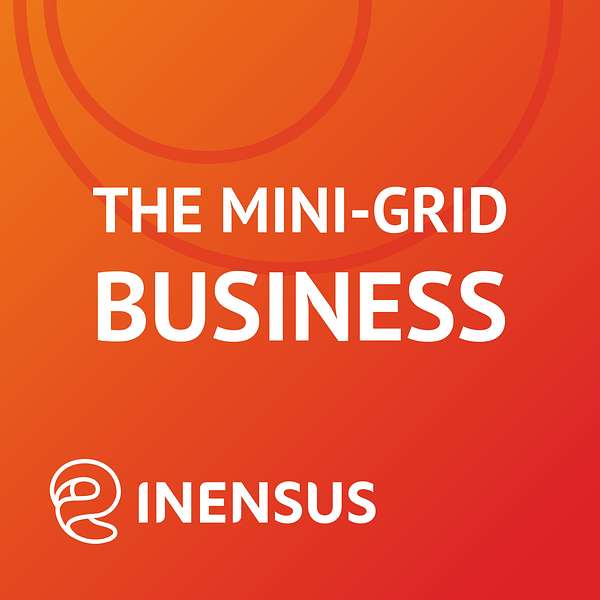
The Mini-Grid Business
Welcome to "The Mini-Grid Business," hosted by Nico Peterschmidt, CEO of the consultancy company INENSUS. With nearly two decades of experience working with over 100 mini-grid companies across Africa and Asia, INENSUS created a podcast, which becomes your gateway to the world of rural electrification through mini-grids.
In each episode, Nico and his guests – seasoned experts who have navigated the complexities of the mini-grid sector – offer candid insights based on real-life experiences. Whether they're individuals who have overcome significant challenges, policy makers shaping the sector’s frameworks and funding structures, or visionaries crafting the future of mini-grids, they all have unique perspectives to share.
From exploring successful pathways to profitability, to dissecting the reasons behind a company's struggles, "The Mini-Grid Business" delves deep into both theory and practice. It questions the accepted status quo of the mini-grid sector, aiming to unearth new perspectives or expose misunderstandings that need addressing.
This is a space for thought-provoking discussions, innovative ideas, and invaluable knowledge exchange.
Whether you are an industry veteran, a newcomer, or simply curious about the transformative potential of mini-grids, this podcast invites you to challenge your thinking, learn from others, and engage with a community that’s shaping a brighter, more sustainable future.
So, tune in, and enjoy "The Mini-Grid Business"!
LinkedIn: https://www.linkedin.com/company/inensus-gmbh/mycompany/
Twitter: INENSUS (@INENSUSgmbh) / X (twitter.com)
Visit www.inensus.com for more info.
The Mini-Grid Business
Managing complexity - digital tools for the mini-grid space
The complexity of the mini-grid business stands at the forefront of Tobias Engelmeier from VIDA and Emily McAteer from Odyssey Energy's discussion, hosted by Nico Peterschmidt from INENSUS / MicroPower Manager Open Source. They explore how software can be a pivotal tool in managing the multifaceted challenges of this sector. Emily particularly highlights that the trajectory of mini-grid software development doesn't deviate significantly from patterns observed in other industries. Typically, individual companies start by developing their own bespoke solutions. However, as the industry matures, enterprise software becomes more prevalent, offering enhanced services at a lower cost compared to the operation of in-house developed software. This transition is crucial for mini-grid companies and the broader sector, promising significant benefits in terms of improved efficiency and user experience, especially for those who are price-sensitive.
For more information about the work and services of todays contributors, you can visit the following websites:
- VIDA: https://vida.place/
- Odyssey Energy Solutions: https://odysseyenergysolutions.com/
- MicroPower Manager: https://www.micropowermanager.com/
LinkedIn: https://www.linkedin.com/company/inensus-gmbh/mycompany/
Visit www.inensus.com for more info.
